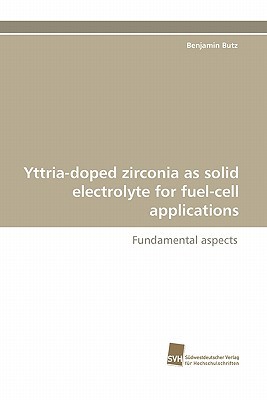
- We will send in 10–14 business days.
- Author: Benjamin Butz
- Publisher: Sudwestdeutscher Verlag Fur Hochschulschriften AG
- Year: 2010
- Pages: 164
- ISBN-10: 3838117751
- ISBN-13: 9783838117751
- Format: 15.2 x 22.9 x 1 cm, softcover
- Language: English
- SAVE -10% with code: EXTRA
Yttria-Doped Zirconia as Solid Electrolyte for Fuel-Cell Applications (e-book) (used book) | bookbook.eu
Reviews
Description
Yttria-doped zirconia (YDZ) has been used as electrolyte for solid oxide fuel cells (SOFCs) for many years. Nevertheless, fundamental questions regarding the thermal stability and thus the degradation of ionic conductivity of YDZ are controversially discussed in literature. In this study, thick-film and sol-gel prepared thin-film YDZ electrolytes with yttria concentrations in the range of 7.3-10 mol% were investigated by transmission electron microscopy (TEM) with emphasis on microstructural and chemical changes during high-temperature operation. In general, nanoscaled regions of metastable tetragonal YDZ were found in all investigated specimens. Depending on dopant concentration and thermal treatment, the microstructural and chemical decomposition of the material on the scale of 10 nm could be shown by quantitative analytical TEM. Hence, clarifying conclusions regarding the YDZ phase diagram in the targeted dopant range are drawn. A revised boundary of the instability region, in which YDZ has to be expected to decompose, is presented. In conclusion, the developing inhomogeneities in decomposing YDZ are discussed as reason for the decrease of ionic conductivity during operation.
EXTRA 10 % discount with code: EXTRA
The promotion ends in 20d.21:38:05
The discount code is valid when purchasing from 10 €. Discounts do not stack.
- Author: Benjamin Butz
- Publisher: Sudwestdeutscher Verlag Fur Hochschulschriften AG
- Year: 2010
- Pages: 164
- ISBN-10: 3838117751
- ISBN-13: 9783838117751
- Format: 15.2 x 22.9 x 1 cm, softcover
- Language: English English
Yttria-doped zirconia (YDZ) has been used as electrolyte for solid oxide fuel cells (SOFCs) for many years. Nevertheless, fundamental questions regarding the thermal stability and thus the degradation of ionic conductivity of YDZ are controversially discussed in literature. In this study, thick-film and sol-gel prepared thin-film YDZ electrolytes with yttria concentrations in the range of 7.3-10 mol% were investigated by transmission electron microscopy (TEM) with emphasis on microstructural and chemical changes during high-temperature operation. In general, nanoscaled regions of metastable tetragonal YDZ were found in all investigated specimens. Depending on dopant concentration and thermal treatment, the microstructural and chemical decomposition of the material on the scale of 10 nm could be shown by quantitative analytical TEM. Hence, clarifying conclusions regarding the YDZ phase diagram in the targeted dopant range are drawn. A revised boundary of the instability region, in which YDZ has to be expected to decompose, is presented. In conclusion, the developing inhomogeneities in decomposing YDZ are discussed as reason for the decrease of ionic conductivity during operation.


Reviews